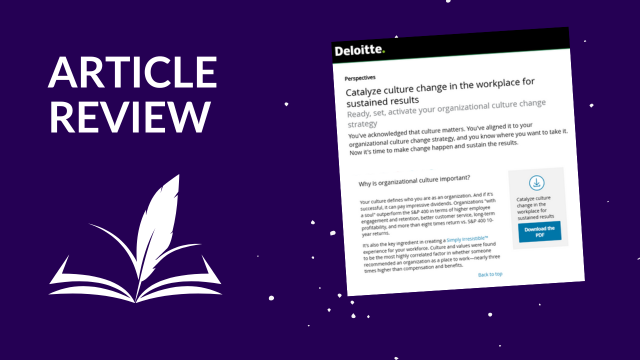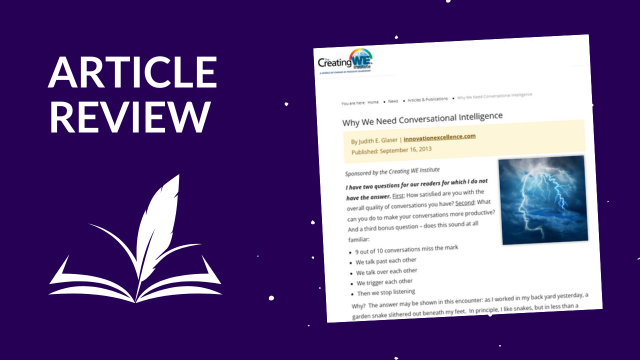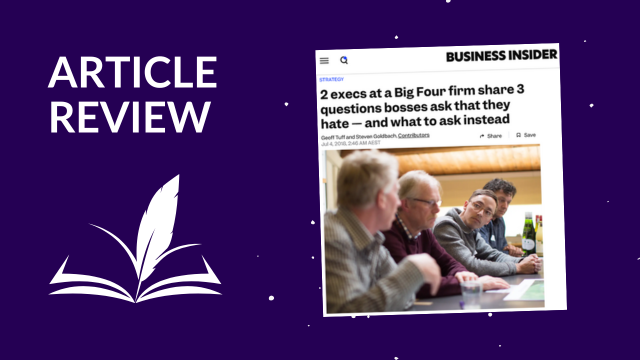No matter what the business content of a strategic organizational change may be, most change initiatives begin at the C-Suite level with defined objectives and intended results. The intent is that these objectives cascade down the organization through middle management to employees who will then be expected to make the necessary behavior and work practice changes to deliver intended results.
The crucial role that middle management plays in implementing successful strategic change is well known to change management practitioners. Are middle managers undertaking the appropriate set of activities to assist in delivering intended results from an initiative? How will you know? So, what can you really do to increase the effectiveness of middle manager participation and leadership during change?
The three articles featured in Parts I and II of this Academic Insight™ provide a closer look into the activities of middle managers during change—what are the expectations, what are the realities, what will increase change professionals’ awareness of middle manager challenges and what can change professionals do to influence direction and delivery.
We’ll start by looking at an article by Rosalie Kuyvenhoven and W. Christian Buss because it provides a literature and research review, producing information that is both important and practical.
Kuyvenhoven, Rosalie and Buss, W. Christian. (2011) A normative view of the role of middle management in the implementation of strategic change, Journal of Management & Marketing Research, Vol. 8, p. 1-14.
What Does This Mean for Practitioners?
In reviewing the literature to determine what middle managers need to be successful in implementing strategy, Kuyvenhoven and Buss provide three “practice gems” helpful to change management professionals when working with this critical set of stakeholders. Each of these gems comes with a set of success factors related to middle managers.
The first gem highlights key factors that have resulted in a more significant strategic implementation role for middle managers, that is, decentralization of organizations and their structures, a higher level of business education achieved by middle managers, and the appearance of the “knowledge organization.” Recognizing the existence of these factors provides the change manager with a more rounded view of middle managers as individuals, especially their ability to understand the complexities of business decisions and operations.
Kuyvenhoven and Buss note the increased interest in research related to middle management and strategic change in recent years. This research yields the authors’ second practice gem—three views of middle management’s role in strategy development and implementation. Each of these views comes with a set of very specific success factors related to middle managers. The table below lists these views as the authors articulate them in the article, the primary spokesperson(s) for each view, and related success factors for middle management.
| View: Middle Managers as… | Spokesperson | Success Having Factors |
| Implementers of top-management, defined strategy, “connecting strategic objectives with day-to-day operations” | L.G. Hrebiniak, 2008 |
|
| Relationship managers in strategic change management, going beyond the concept of connecting the two tiers of the organization to significant involvement “in both the definition and execution of strategy” | S. W. Floyd and B. Wooldridge, 1992, 1994, 1997, 2000 | Relation with top management
|
Strategy
|
||
Role
|
||
Skills
|
||
| Key strategic actors | Balogun, J., 2003, 2006, 2007
Balogun, J. and Hailey, H.V., 2008 |
Relation with top management
|
Middle management skills
|
Middle managers
Within the “Implications” section of their article, Kuyvenhoven and Buss deliver the third “practice gem.” They include a series of recommendations for each of the following groups involved in implementing strategic changes:
- Top managers
- Consultants
Although the recommendations are not revolutionary, they do serve to remind each of these groups of how they are responsible for, and can contribute to, the success of a strategic initiative. They also serve to lay solid content groundwork for conversations between each of the groups.
As the authors emphasize, the role of the middle manager as the person who actually implements change is prominent and the role has, if anything, expanded over time to include greater responsibility for how change is managed. Change management professionals can benefit from this research as it supports much of what they already have experienced. Research will also give them additional insights into levers for moving middle managers to the right level of engagement and action. The research helps to reinforce the reality of the enigma for middle management during change implementation—balancing between managing ongoing business operations and introducing new business practices into their operational unit that will improve business operations. Understanding this balancing act is key for change managers as they work with middle managers to enlist their engagement, secure resources for subject matter experts on the change team, and determine optimal implementation activities.
Part II of this series reviews two more articles on the topic of middle managers and change, this time the emphasis is on one aspect of the role of middle managers that is critical during change—that of receiving and delivering information within their business units and to senior management—their “occupational currency.”







